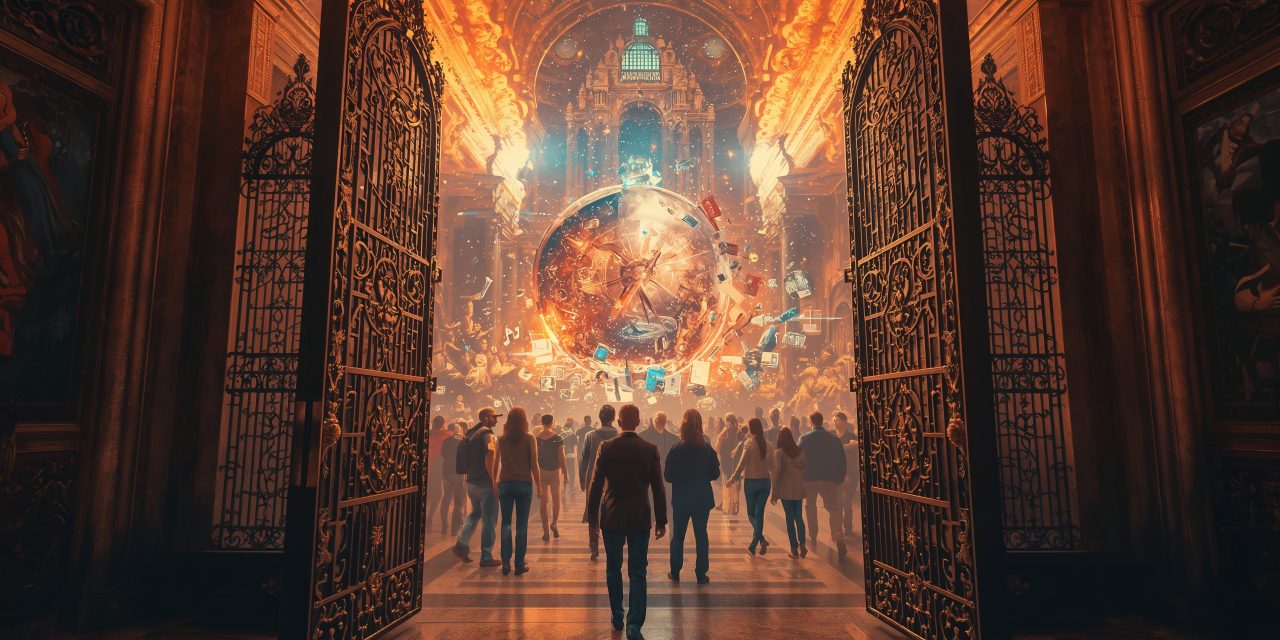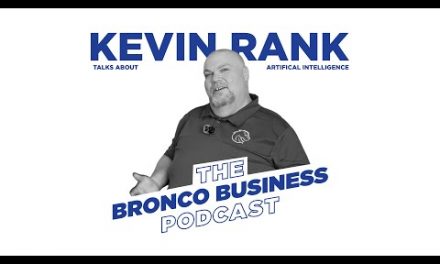This is an Eleven Labs recording of the article. 8:12 running time.
The Creative Castle’s Moat Just Became a Puddle
Have you ever had a scene so vivid in your mind that you could taste the colors, only to watch people’s eyes glaze over when you tried to explain it? Or maybe you’ve hummed a melody in the shower that deserved a symphony, but all you could manage was “it goes like… dum da dum, but more epic, you know?” That gap between what lives in your head and what you can actually create has been humanity’s cruel inside joke since we started having ideas worth sharing.
For centuries, creative expression has been locked behind gates guarded by a simple but insurmountable barrier: technical skill. Want to paint that sunset that moved you to tears? Better spend a decade learning color theory and brush techniques. Got a symphony playing in your head? Hope you’ve mastered musical notation and can afford an orchestra. The gatekeepers weren’t necessarily malicious – they were simply the reality of human limitation. Until now.
AI hasn’t just picked the lock on creativity’s gates; it’s removed the gates entirely, leaving the old guards standing around wondering what to protect.
The Historical Déjà Vu Nobody Wants to Admit
We’ve been here before, and we’ve clutched our pearls every single time. When photography emerged in the 1840s, painters literally called it “the enemy of art.” Charles Baudelaire (not exactly a Luddite) warned that photography would “corrupt art altogether” because it let the unwashed masses create images without spending years apprenticing to masters.
The pattern is almost comically predictable: New technology appears. Established artists declare it “not real art.” Society adopts it anyway. Twenty years later, we pretend the controversy never happened. Rinse, repeat.
Remember when Auto-Tune was going to “destroy real singing”? When Photoshop was “cheating at photography”? When electronic synthesizers would “end real musicianship”? And let’s not forget that video killed the radio star, or at least that’s what the Buggles promised us in 1979, ironically using those very same “music-destroying” synthesizers to herald radio’s demise. Spoiler alert: radio’s still here, and so are the stars. Each technology faced the same accusation: it was letting those people into our exclusive creative club. You know, the unskilled, the untrained, the unworthy.
Your Mind’s Eye, Now With 20/20 Vision
Here’s where it gets personal. I recently worked with a student who was legally blind, using AI image generation to help me understand how they perceive the world. Through careful prompting and iteration, we created visual representations of their limited sight experience – something that would have been impossible without either hiring an artist willing to spend weeks on the project or somehow gaining artistic skills overnight.
This isn’t about replacing human creativity; it’s about amplifying human imagination. My brother-in-law had melodies and lyrics bursting from him for years. These are genuine musical ideas that lived only in his head because he never learned piano or guitar. With AI music tools, those songs now exist in the world. They’re his creative vision, his emotional expression, just mediated through silicon instead of years of callus-building.
The dyslexic entrepreneur who can now write compelling business proposals. The grandmother with arthritis who can finally “paint” the memories she wants to leave her grandchildren. The child with cerebral palsy who can compose music with their voice. These aren’t lazy people trying to fake creativity, they’re human beings with genuine creative impulses finally given the tools to express them.
The Great Provenance Panic
Of course, the traditional creative class is having what we might charitably call “a moment.” Visit any online art forum and you’ll find variations of the same argument: “It’s not real art if you didn’t suffer for it.” The subtext is clear: if everyone can create, then being “a creative” loses its special status.
There’s an almost religious devotion to process over product in certain creative circles. A painting that took 100 hours is inherently more valuable than an identical-looking image generated in 30 seconds, they argue. It’s the creative equivalent of insisting that a chair is only valuable if someone whittled it by hand rather than using power tools.
The business world, tellingly, has no such hang-ups. Marketing departments are gleefully generating graphics, startups are creating logos, and entrepreneurs are writing copy, all with AI assistance. Why? Because business cares about results, not providence. Does the logo communicate the brand? Does the copy convert? Did the presentation land the client?
Nobody in the boardroom asks if you personally kerned every letter.
The Skill-Versus-Soul Fallacy
Here’s what the gatekeepers miss: technical skill and creative vision were never the same thing. They just happened to be forcibly bundled together by the limitations of human neurology and physics. It’s like saying you can’t be a race car driver unless you can build an engine from scratch.
When someone uses AI to create, the human still provides:
- The concept and vision
- The emotional intent
- The creative direction
- The critical selection
- The contextual meaning
What AI provides is merely the technical execution. It’s the difference between being an architect and being a bricklayer – both valuable, but fundamentally different roles. AI has simply become the universal bricklayer, available to any architect with an idea.
Welcome to the Creative (Not So) Commons
We’re standing at the threshold of what might be the largest expansion of creative expression in human history. Not because AI is creative (it isn’t), but because it’s given millions of people the ability to translate their internal creative visions into external reality.
Yes, this means we’ll see a flood of mediocre content. So what? We already had that. It was just mediocre content from people with technical skills rather than mediocre content from people with ideas.
I lived through this exact phenomenon with HDR photography. When Trey Ratcliff was pioneering the style and tools became accessible, suddenly everyone (myself included) was cranking out HDR images. Some of my photos from that era are genuinely beautiful. Others? Let’s just say they look like radioactive fever dreams where the saturation slider had a restraining order filed against it. The photography forums were absolutely drowning in terrible, overcooked HDR. The purists were apoplectic, insisting it “wasn’t real photography” because we were using 12 stops of light instead of the camera’s natural 8. But you know what? Some incredible art emerged from that chaos, and HDR techniques eventually became just another tool in the photographer’s kit. The same will happen with AI.
At least now the pool of potential brilliance has expanded exponentially. Somewhere out there is a genius storyteller who happens to be dyslexic, a visual prophet who happens to be blind, a musical savant who happens to be physically unable to play instruments. AI just handed them all microphones.
The gatekeepers are right about one thing: the special status of being “creative” is ending. But they’re wrong about what that means. It doesn’t mean creativity is dying; it means it’s democratizing. The Renaissance wasn’t called that because a few artists got better. It was called that because art exploded across society. We’re about to experience something similar, except this time, everyone gets to participate.
The gates are open. The question isn’t whether you’re allowed in anymore. It’s what you’ll create now that you are.





Trackbacks/Pingbacks